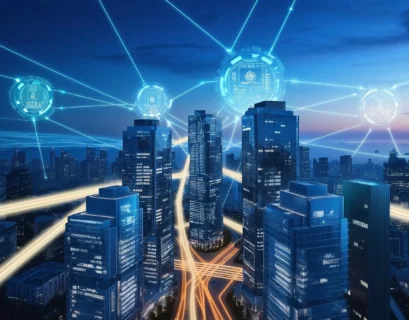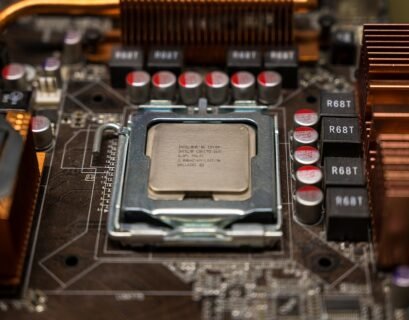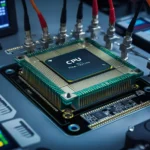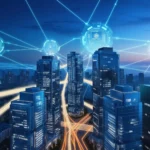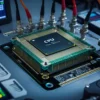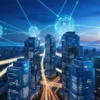As the world becomes increasingly interconnected and technology-driven, the workforce landscape is evolving at an unprecedented pace. At the center of this transformation is artificial intelligence (AI), which has the potential to reshape not only the nature of work but also the types of jobs available. With AI capabilities improving at a remarkable rate, a pressing question emerges: will AI replace human jobs or serve to augment them?
This article seeks to explore the multifaceted relationship between AI and the future of work, analyzing industry insights, technical innovations, and offering a future outlook alongside considerations for how to prepare for the coming changes.
I. The Current State of AI and Its Adoption in Various Sectors
A. Understanding AI
AI refers to computer systems that can perform tasks that typically require human intelligence, such as problem-solving, learning, reasoning, and understanding natural language. Machine learning (ML), a subset of AI, involves algorithms that enable systems to learn from data and improve over time without explicit programming.
B. Industries Embracing AI
From healthcare to finance, and manufacturing to retail, industries are embracing AI for a variety of applications:
-
Healthcare: AI algorithms are being developed to enhance diagnostic capabilities, predict patient outcomes, and personalize treatment plans. For example, IBM Watson Health aids in the rapid analysis of health data to assist physicians in making informed decisions.
-
Finance: AI-driven tools provide risk assessment, fraud detection, and algorithmic trading capabilities. Companies like Stripe utilize machine learning to analyze transactions and flag suspicious activities.
-
Manufacturing: Robotics and AI enhance supply chain efficiency and quality control, reducing operational costs and production time. Automated machines can predict equipment failures, leading to better maintenance strategies and downtime reduction.
- Retail: AI enhances customer experiences with personalized recommendations. Retailers like Amazon employ AI algorithms for inventory management and demand forecasting to optimize supply chain operations.
As these industries continue to harness the power of AI, concerns regarding job displacement arise, leading us to examine the potential future of the workforce.
II. Understanding Job Displacement vs. Job Transformation
A. Job Displacement: The Fear of Obsolescence
The increasing integration of AI technologies has led to fears of job loss. The World Economic Forum predicts that by 2025, 85 million jobs may be displaced due to the shift toward automation and AI. Occupations that involve repetitive tasks—such as assembly line work, data entry, and basic customer service—are particularly vulnerable.
B. Job Transformation: A Shift in Human Roles
While fears regarding job displacement are valid, the narrative surrounding AI should also focus on job transformation. Many roles will not disappear; rather, they will evolve. Workers may find their tasks supplemented by AI tools that enhance productivity and effectiveness. For instance, engineers might leverage AI for enhanced design analysis, while journalists could utilize AI-powered platforms for data storytelling.
The notion that AI will simply replace jobs underestimates the potential for human contribution. AI excels in tasks that involve pattern recognition and large data analysis, but human emotional intelligence, creativity, and complex decision-making remain indispensable.
III. Insights from Emerging Technologies
A. AI as a Collaborative Partner
AI systems are increasingly designed to collaborate with human workers rather than overshadow them. These collaborative models, often referred to as "intelligent augmentation," emphasize the partnership between AI and humans.
-
AI-Powered Assistance: Tools such as chatbots and virtual assistants can take over basic queries, allowing customer service representatives to focus on complex issues that require human empathy.
-
Enhanced Creativity: AI-driven design tools (e.g., Adobe’s AI technologies) assist professionals in creative fields by providing suggestions that can inspire new ideas, improving overall creativity.
- Decision Support Systems: In sectors like finance and healthcare, AI systems analyze vast data sets, delivering actionable insights to aid human professionals in making informed decisions.
B. The Role of Automation
Automation is not exclusive to AI; it encompasses a broader array of technologies that streamline processes. Robotic Process Automation (RPA) helps automate routine tasks across sectors, with benefits such as improved accuracy and efficiency. Workers can then pivot to higher-value tasks that require analytical thinking, creativity, and emotional intelligence.
IV. Labor Market Changes: Skills and Education
A. Reskilling and Upskilling
As the demand for technology-savvy professionals grows, reskilling and upskilling have become essential. Employers and educational institutions must collaborate to ensure the workforce can keep pace with technological innovations. According to the MIT Work of the Future report, the jobs of the future will require high levels of technical proficiency, creativity, and social intelligence.
-
Technical Skills: Fields such as data analysis, programming, and cybersecurity are gaining traction. Educational programs that intersect technical training with real-world applications will become crucial.
- Soft Skills: Human-centric skills, such as critical thinking, emotional intelligence, and communication, will remain invaluable in roles where personal interaction is paramount.
B. Lifelong Learning
With rapid technological advancements, the concept of lifelong learning has become necessary. Employees will need to engage in continual education, training, and skill upgrade throughout their careers. Companies should invest in upskilling programs that help their workforce adapt to new demands. This approach not only benefits individual employees but also builds a more resilient organization.
V. Government and Organizational Initiatives
A. Policymaking and Support
Governments worldwide are beginning to understand the socio-economic implications of AI on the workforce and are working on creating policies that mitigate the impact of job displacement. Initiatives might include:
-
Job Transition Programs: Providing support for individuals transitioning between jobs and industries, especially in cases of major disruption due to AI.
-
Tax Incentives for Training: Offering tax breaks or funding for organizations willing to invest in the continuous education of their workforce.
- Business Incentives: Formulating strategies to encourage businesses to adopt AI responsibly, fostering a balance between automation and human employment.
B. Corporate Responsibility
Within the corporate sector, businesses are starting to adopt policies that highlight ethical AI use. Companies can lead by example, showcasing AI as a tool to enhance their workforce rather than replace it. By fostering a culture of innovation and collaboration, organizations can pave the way for AI integration that complements human roles.
VI. The Future Outlook: A Hybrid Workforce
A. Blending Human and AI Capabilities
The future of work will likely involve a hybrid model that combines human expertise with AI capabilities. As mundane tasks become automated, the human workforce will focus more on roles that prioritize critical thinking, creativity, strategy, and empathy.
This shift offers a plethora of new opportunities:
-
Job Creation: While some jobs disappear, new ones will arise in developing, managing, and maintaining AI systems—think data scientists, AI ethicists, and machine trainers.
-
Innovation in Job Roles: As traditional roles undergo transformation, we may see the emergence of positions we cannot yet envision, driven by new technological paradigms.
- Improved Work-Life Balance: With AI handling repetitive tasks, human workers may experience improved focus on meaningful work, potentially leading to better job satisfaction and a healthier work-life balance.
B. Economic Implications
While the challenges of the AI rollout are undeniable, the economic implications may also bear significant benefits. Increased productivity due to AI integration can lead to economic growth, provided workers are equipped with the skills to thrive in this new environment. However, this requires a robust partnership between governments, businesses, and educational institutions to ensure that the workforce is prepared for emerging challenges.
Conclusion: Embracing the AI-Driven Future
As we stand at the forefront of a new chapter in the world of work, the crucial question is how we will embrace AI. It is imperative to move beyond the binary lens of replacement or augmentation and instead focus on the synergy between AI and human capabilities.
The future will not hinge on AI rendering human jobs obsolete, but rather on AI augmenting human roles, where both can coexist and thrive. It is essential for individuals and organizations to proactively adapt—through continuous learning, embracing technological partnerships, and fostering innovation to ensure a prosperous future.
Navigating this evolving landscape will be challenging, but with proactive strategies in place, society can harness the immense potential of AI while creating job opportunities that not only sustain but enrich the workforce. The emphasis should be on cultivating a resilient job market that prepares individuals for change rather than erasing the rich tapestry of human roles. By doing so, we can ensure that the future of work is collaborative, innovative, and remarkably human-centered.





